The humans of Planet Earth have successfully created a new ecology of signs. Where nature once populated our vistas and imaginations, factories and endless Internet feeds now orientate our journeys. Satellites chart our paths as we once had to chart stars. Such news, from nowhere, while still considered of note in the 1960s, has come and gone. A delicate system of pulleys and wheels, automated assembly lines, and underpaid contractors are the lifeblood in the nervous system of a society whose pre-eminent occupation is IN nervousness. A factory is now more capable of producing a semi-permeable membrane than you’re able to get through to your family’s actual permeable brain’s worldview this Christmas.
Suspicion and self-doubt are the unlikely parasympathetic cousins of playfulness, creativity, mythology, and compassionate joy. That nervousness can be traced back to the heart of darkness. Uncertainty and confusion are not only redeemable, but distinctly human. The states of confusion and uncertainty dissolve into a dissonant oasis of aural calm and hyperreal nature, or half-remembered bliss. Vapourwave.
Vapourwave? You mean that genre for art kids that slows down and loops 80’s synth-funk? Oh, but it’s so much wider-ranging than surface-level frippery! How do you account for its emotional resonance to so many people? So many hits of the alternative and mainstream pop world are slowed and drenched in reverb for the pleasure of thousands of listeners, carrying a distinctly Vapourwave feel.
But why would people want to visit places of transient cacophony, with truncated, endlessly-repeating loops? Perhaps it is because blending sounds of isolation, loneliness, and ghost emotions reminds us of how connected we actually are…to our interior, our exterior, and to others. Lonely cities pique the imagination. Identikit Globalism and the shopping mall take on a metaphysical quality, with their crumbling, postmodern architecture. Vapourwave’s aesthetic motifs, seemingly cherry-picked at random, are outcroppings of a dreamscape in a Jungian analysis – a sort of departure lounge of eternity.
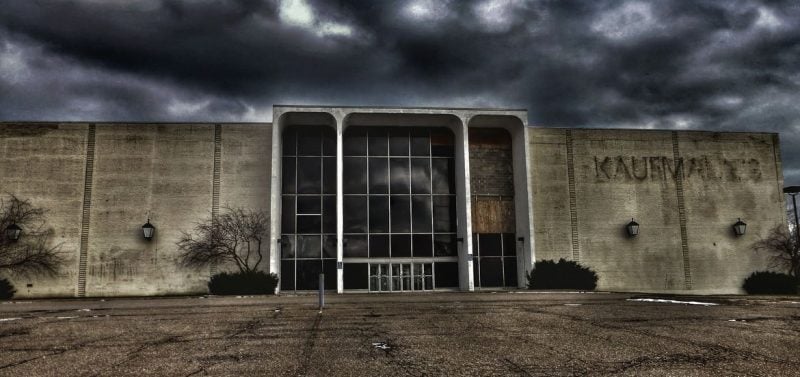
I have no doubt that the creators of these palatial Miracle Mile hallways played to the grandeur of skyscrapers or the gargantuan structures of Ancient Rome or Egypt…but did they stop to think of the overwhelming numbing quality of these buildings? Their crowds and echoing; garbled music floating through our infant minds in these oceans of noise, and pictures, where the enforced joviality and agreeableness of kitsch simultaneously attracts and repels. Its bobble-headed mascots litter a desert of reality, like a Midwestern car park reenactment of Ozymandias.
Dan Bell’s captivating YouTube series Dead Malls explores a fading American landscape of retail, abandoned buildings, and motel rooms with questionable hygiene. I see evolution in “Content,” one that’s become extremely niche and meticulous. YouTube’s nebulous nature reflects the cerebral and creative experiences of the post-Internet generations, who formed their experiences by snatching snippets from the ether, sound bites, memes, half-remembered musical motifs, and tossing them into a blender.
Britain, by contrast, has very few dead shopping malls. Working in one, a new feeling occurs within: “I actually work here. I’m not a consumer anymore.” The sheer monotony forces you to take yourself on dates and imagine how charming you could be in the right company. It gets so bad that I’m almost tired of my own reflection in shop windows, and with headphones on I am immersed in my own symphony. Nothing remains unchanged with time, even in malls. A monorail used to run throughout, and koi once sauntered through wishing pools with carpets of copper coins dispensed by children and presumably, the wishful. The reality is gone, but the memory is as vivid as it is paraphrased, and xeroxed; a projected apparition.
William Basinski’s disintegration loops are perhaps the greatest example of a proto-Vapourwave experience, not least because the tracks themselves were initially truncated clips of 1980s radio. His camcorder captured the sunset of the day of 9/11: an encapsulation of loss. The hypnotic meditative trance the tapes produce is immense. If the loops represent disintegration and decay, then Vapourwave shows the ghostly screen-burned image of copies and a postmortem embalming of experience. Its uncanniness becomes both its subversive charm and its critique of a cultural overload: a kind of Hollywood magic in a world of polluted sunsets. When does a light-flooded cathedral of commerce become a mausoleum blanched white like the marble sculptures of Athens? About the time it takes a 90’s kid to be staring down the barrel of 30.
The experience of listening to Vapourwave can be likened to sitting at the edge of a lake in a lovely garden in a meditative state, acting as a medium. Picture the lake filled with those wishing pool koi. Each fish flashes past, representing a tucked-away memory. Some linger in greater detail; others scurry away in a blur. Some pass through more fully realised; some remain cryptic phrases from the Black Lodge. Close your eyes and listen. What are your own vapour memories? Recount the flashes.
FLASH, PART ONE: It is 11 September 2001. I am six years old. I am in a video rental shop. A small crowd of people watch the World Trade Center billowing smoke into a crisp blue New York sky.
FLASH, PART TWO: The padlocked ward gate has a field of sunflowers printed on it, highlighting the irony of Van Gogh’s most famous image of hope, optimism, and faith, painted just before his suicide. The Sower especially reflects his own occupation, scattering himself, hoping for a blossoming Spring. A plant relentlessly seeking the light. Plants, however, do not carry the burden of a mammalian consciousness. Now, as a field of sunflowers digitally printed onto a steel gate obscures a view of a large hospital, Van Gogh’s death and the seeds of his legacy have nearly repeated themselves. The good earth is fed by blood.
FLASH, PART THREE: A friend’s garden. I see a plastic flower; its plastic petals reminiscent of a Buddhist painting. In the center sits a solar panel transforming light into energy: an object that pays homage to its “roots.” I tell my friend we may have to become more like our great-grandparents. Later, I watch cooking tutorials of Great Depression meals.
FLASH, PART FOUR: I’ve just ordered watermelon and black forest gateau ice cream, stunning the clerk. The taste combination hits my nervous system like a sacred vision. I spritz on some Lush toner water, infused with aloe to make my hair curl like I’ve just walked out of an ocean of good taste. I want to look sharp, after all. Ice cream in hand, I walk past the luxury mall apartments with my imaginary date to the cinema. I cry four times during the film.
FLASH, PART FIVE: “This isn’t old music, this is Floral Shoppe.”
The sunny era of the shopping mall echoes the demise of Van Gogh as it slowly and painfully exited in the wake of pathological optimism and persistent capitalism. Somewhere in the catacombs, however, the ghosts of 80s mall rats, Easy Listening numbers on tinny PA systems, sales announcements, and excited adolescent chatter float in the ether of collective memory. Those ignored sounds of shopping ambience formed our musical nostalgia. I imagine a post-industrial, apocalyptic near-future, where gangs of cyberpunks huddle by fires in the catacombs of old malls, the retail spaces now the hollowed-out caves of the Technorenaissance, surrounded by people vibing to Vapourwave.
Vapor Memory has become a great resource in the quest for more ambient listening experiences. Bandcamp links and Patreons reward this disparate global community of creatives. Earlier in the year, when the channel expressed concern that the frequency of uploads might be upsetting certain users, a chorus of subscribers said “hell no, keep doing what you’re doing.” I’ve already seen too many things left to rot; too many gardens weeded over. Vapor Memory was now my favorite supply of fresh and delicious albums. If retail space is dying, at least the bedroom art maker is thriving.
Here are some excellent examples of those half-remembered flashes embodied in the Vapourwave experience. There is a calmly detached, AI-quality to many of the tracks; as if neoclassicism was suddenly redefined by robots.
Lindsheaven Virtual Plaza: Rainforest Hill
A quintessentially calming record. I would try to fabricate and tune into an ancient mindset, which took the sting out of the self-isolation of quarantine. The album never dips into a mournful dirge, and neither does it overplay its motifs and fall into becoming pastiche.
desert sands feel warm at night
They say don’t judge a book by its cover, but what is an album without its JPEG? The trappings are here, slowed-down vocals mirror the feeling of a slow descent, rain-soaked, wet with tears of joy and sadness with the distinct taste of red wine…or white port.
Infinity Frequencies: Between two worlds
Infinity Frequencies are a fascinating mashup of what feels like library music. The joins in the loops and samples are worn on the outside; each one creates an impressive and oppressive mood of mystery and potential darkness. Its analogue rumbling EQ keeps you soothed like incidental music in Star Trek TOS. Drift into smooth jazz, electric piano, bells. Listen to all of them.
Gradient Horizont is one of the first albums I fell in love with on the Vapor Memory archive. A tropical, synthetic-blushed horizon, it could be Miami, Basinski’s New York balcony 100 years on, it
could be the end of time: a fat, compressed snare sound throughout and a wonderful artwork that is an ambiguous ident.
Riki, a Los Angeles based dark synth-pop outfit led by Niff Nawor, a visual artist and musician active in the deathrock / anarcho-punk scenes of the California bay area (formerly a member of Crimson Scarlet), before founding her solo endeavor as Riki in 2017. Riki’s album may seem like a curveball compared to the rest of the choices on here, but Vapourwave doesn’t have to be drowned in atmospherics to achieve its emotional impact. Even clean production can heighten the escapism: the escape in question here feels like a subterranean goth club or speeding on a highway at the witching hour. (Read Post-Punk.com’s Interview with Riki here).

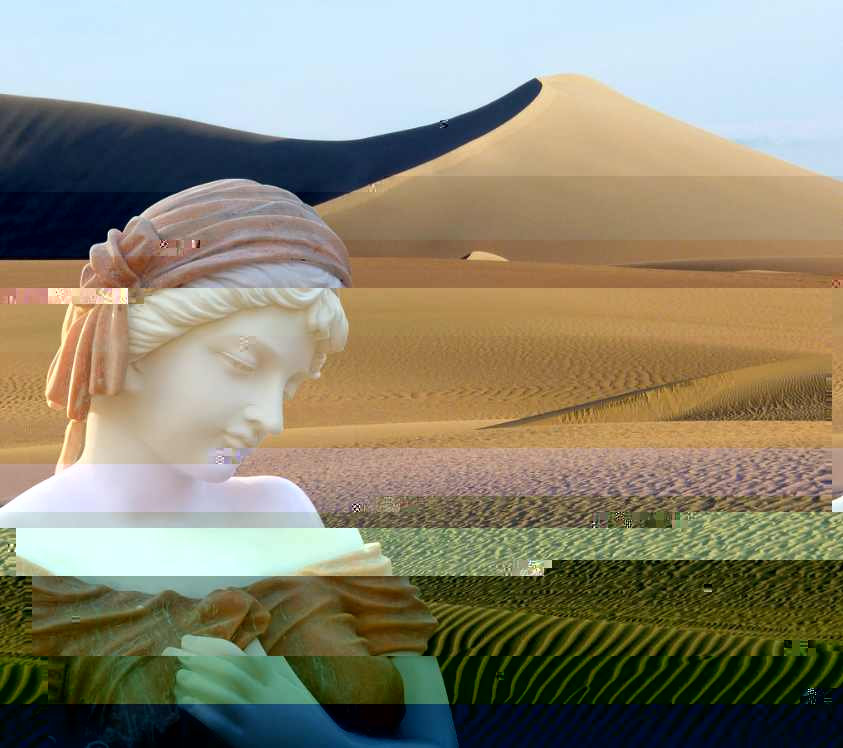

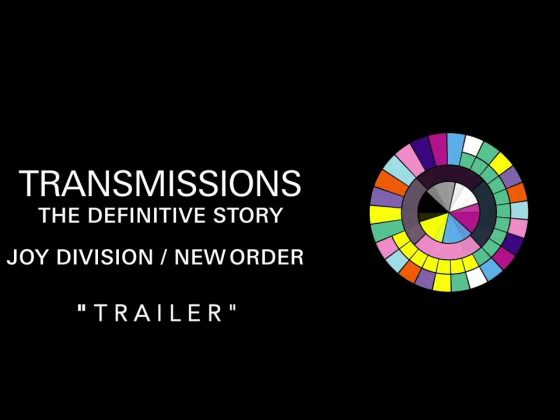
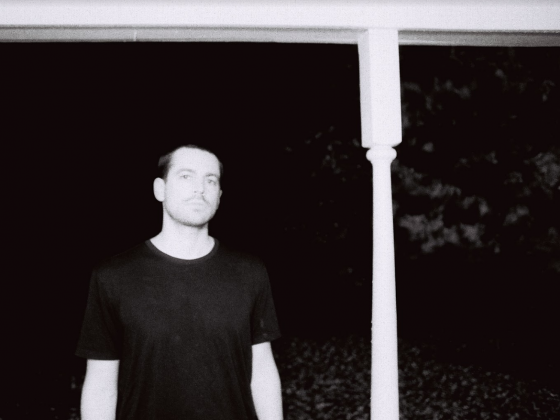
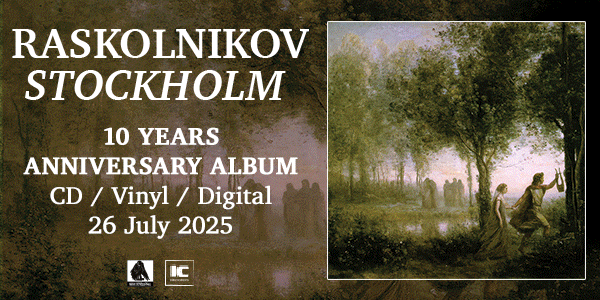









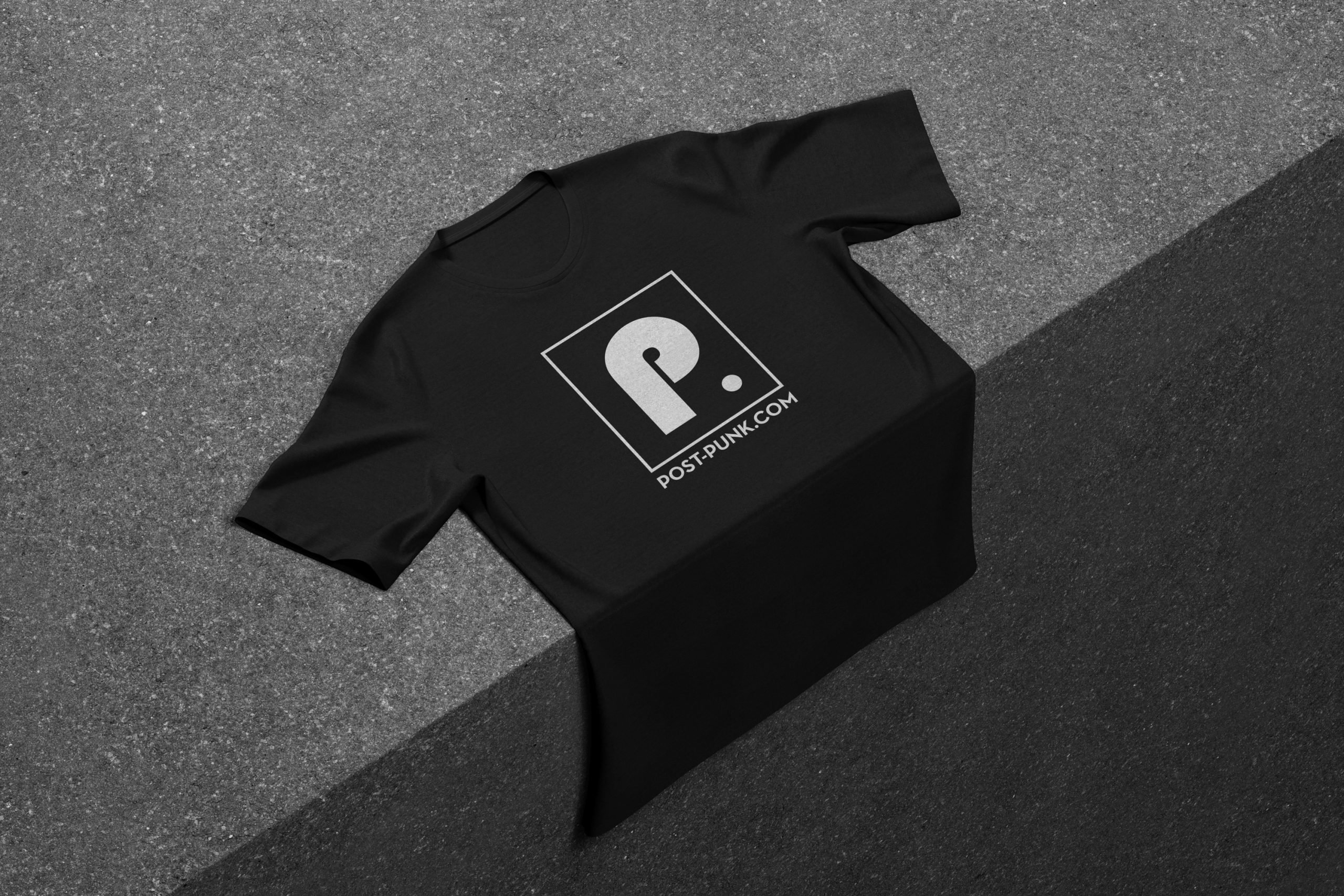 Or via:
Or via: